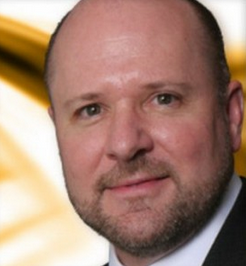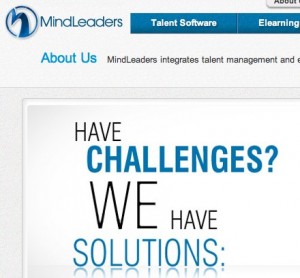Brands
MindLeaders CMO Alan See on Using Content to Capture Customers [INTERVIEW]
This post is part of the Content Q&A Series, featuring interviews with top content strategists and bloggers about their work and insights about the industry.
After 30 years in the profession, Alan See knows a few things or two about marketing and sales.
 He’s the chief marketing officer and vice president of marketing of MindLeaders, which develops tools to better equip employees in the workplace.
He’s the chief marketing officer and vice president of marketing of MindLeaders, which develops tools to better equip employees in the workplace.
He is also a marketing professor at The University of Phoenix and has more than 46,000 followers on Twitter.
The Content Strategist spoke with See about B2B marketing, his Twitter followers, and how to use content to win customers.
The Content Strategist: How long have you been at MindLeaders?
Alan See: I started in October of last year. Before that, I was at an agency owned by AT&T. I’ve been a CMO since 2008.
I believe heavily in a content based integrated marketing strategy. Content based for me means content in the form of thought leadership, whether it’s white papers or assessments. It’s based on really strong content that’s thought provoking.
When I say integrated, it means they’re not only integrated across channels like social media, print, or banners, but also with the sales process. Creating content for the sake of content doesn’t make sense if it’s not supportive of the sales process.
TCS: How does MindLeaders use content?
See: We take this great content, and through different communication channels, we’re out there pulling people to our website to download and take assessments. We’re definitely promoting on Twitter and we’ve found good feedback on that channel.

[We also use] magazines in our industry like Workforce, Talent Management, Human Resource Executive, and the Human Capital Institute. We use their memberships to promote our content and bring people to our site to create a download. They come to our site and register with their name, e-mail, and phone number. [Using] the title of white paper, we know who they are and what they’re interested in.
So when our sales force follows up to that action, at least it’s not a cold call. They have a common place to start the conversation, even if it’s “Thanks very much and have a great day.” They have a way to start the conversation based on a subject of interest.
TCS: Who is your demographic for your marketing efforts?
See: We’re targeting companies with 500-5,000 employees. Bank of America is one of our customers so we certainly have larger companies. The IT world is very big [for us] from the standpoint that its staffs typically need lots of ongoing training.
There’s not really one vertical. It’s any company interested in training and making sure employees stay up to date with skill sets.
TCS: How did you get so many Twitter followers?
See: There isn’t one silver bullet. But I will say it definitely helps to have been an early adopter to social media. With LinkedIn, I was one of the first 100,000 people in that network in 2002. I was lucky enough to join early. I also hope my content is interesting and helps people.
 I’m also a blogger. It’s syndicated by AT&T and customerthink.com. Having leadership helps bring people to my Twitter site.
I’m also a blogger. It’s syndicated by AT&T and customerthink.com. Having leadership helps bring people to my Twitter site.
I make a constant effort not to broadcast to Twittter. I offer exchanges to people who follow me. I’m not beyond using mini Twitter tools that are out there to target people who have common interests with me.
TCS: What are some rules that all CMOs should follow?
See: Be dedicated to being a lifelong learner. You don’t want to feel like your learning is over because there is always something new that you could be looking at.
The other thing is to keep an open mind. One of the easiest things to do is to ignore the evidence. Never ignore the evidence, especially if you’re wrong. It’s easy to say, let’s do it again because this test might be wrong. You have to look at the evidence in a critical way.
TCS: Any advice for aspiring CMOs?
See: Social media impacts marketing, [as does] finance, sales, customer service, and production. You can’t name a functional area of a business that social media doesn’t impact. Because of this, now the CMO is interacting with [everyone] and needs to be aware of every functional area of the business.
The CMO is almost the chief operating officer, think of that role in a much broader aspect maybe than you thought of in the past.
The day of the generalist has come back. My MBA is in general business and it’s almost evenly divided in thirds between marketing, finance, and management. That has really served me well.
Social media has changed the world and marketing. It crosses all these functional areas. It becomes important to negotiate with all of them.

Get better at your job right now.
Read our monthly newsletter to master content marketing. It’s made for marketers, creators, and everyone in between.




